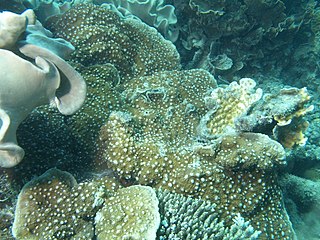
The Catocalinae are a subfamily of noctuoid moths, placed in family Noctuidae. In the alternative arrangement, where the Noctuidae are reduced to the core group around the Noctuinae, the present lineage is abolished, the upranked Catocalini being merged with the Erebini and becoming a subfamily of the reestablished family Erebidae.

Inocybe lacera, commonly known as the torn fibrecap, is a poisonous species of mushroom in the genus Inocybe. Its appearance is that of a typical "little brown mushroom": small, brown and indistinct. However, it is distinguishable by its microscopic features, particularly its long, smooth spores. As with many other species of Inocybe, I. lacera contains the poisonous chemical muscarine which, if consumed, can lead to salivation, lacrimation, urination, defecation, gastrointestinal problems and vomiting. Found in Europe and North America, it typically grows in autumn in mixed woods, favouring sandy soil. There are several documented subspecies in addition to the main I. lacera var lacera, including the dwarf form I. lacera var. subsquarrosa and I. lacera var. heterosperma, found in North America.

Lacera is a genus of moths of the family Erebidae first described by Achille Guenée in 1852.
Coleophora lacera is a moth of the family Coleophoridae. It is found in southern Russia.

Lacera noctilio is a moth of the family Erebidae. It is found in Africa, where it is known from Malawi and La Réunion and southern Asia, Australia and several Pacific islands.

Lacera alope, the toothed drab, is a moth of the family Erebidae. The species was first described by Pieter Cramer in 1780. It is found in Africa, where it is known from southern and eastern Africa, including several islands of the Indian Ocean, Saudi Arabia, and southern Asia from India, Sri Lanka to China.
Netechma lacera is a species of moth of the family Tortricidae. It is found in Peru.

Platanthera lacera is an orchid in the genus Platanthera, native throughout Eastern United States and Canada. It occurs in a variety of habitats ranging from “mesic and dry-mesic sand prairie, wet sedge meadow, calcareous fen, sphagnum bog, acid seep spring, dry field, mesic flatwoods, and mesic upland forests.” Common names include ragged fringed orchid and green fringed orchid.
The Hulodini are a tribe of moths in the family Erebidae.
Lacera apicirupta is a moth of the family Erebidae. It is found in Uganda.
Lacera asinuosa is a moth of the family Erebidae. It is found on Java, Bali and Flores and in New Guinea. The habitat consists of montane areas.
Lacera nyarlathotepi is a moth of the family Erebidae.
Lacera azatothi is a moth of the family Erebidae. It is found in New Guinea.
Lacera uniformis is a moth of the family Erebidae. It is found from the Indian subcontinent and Sundaland, east to Queensland and Vanuatu.
Lacera vinacea is a moth of the family Erebidae. It is found in New Caledonia.
Lacera contrasta is a moth of the family Erebidae. It is found on Fiji.
Lacera violacea is a moth of the family Erebidae. It is found on the New Hebrides and Vanuatu.
Zauclophora procellosa is a moth in the family Xyloryctidae. It was described by Thomas Pennington Lucas in 1901. It is found in Australia, where it has been recorded from Queensland.

Oxypora lacera, the ragged chalice coral or porous lettuce coral, is a species of large polyp stony corals in the family Lobophylliidae. It is a colonial coral which can be submassive, encrusting or laminar. It is native to the western Indo-Pacific.

Echinophyllia aspera, commonly known as the chalice coral, is a species of large polyp stony corals in the family Lobophylliidae. It is a colonial coral which is partly encrusting and partly forms laminate plates or tiers. It is native to the western and central Indo-Pacific.






